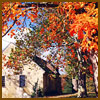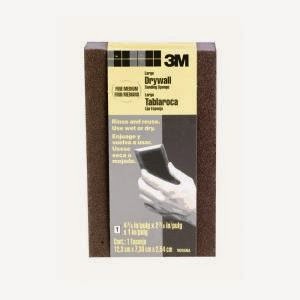Many people think that if you can simply match the color of the damaged area that a seamless touch up is inevitable, but not so. In fact there are several factors to consider when trying to blend in a touch up.
You have to realize that the finer the finish, the more
difficult it will be to touch up. For example, it will be more difficult to
touch up the coffee table than it will be to touch up the front door or the
walls inside your home. You see, not only will you have to match color, the
finish and sheen will also have to be matched. The methods and tools required
for each sort of touch up can be vastly different.
Before starting, you need to clean all surfaces free of
dust, grease, hair, and stains. Kitchens sometimes have grease spots on the walls;
bathrooms sometimes have water stains, and trim usually have dust or dirt.
Next, make any repairs to drywall, wood, etc. as needed and prime with the
appropriate coating. Once the surfaces are repaired and clean, you’re ready to
touch up.
First, you’ll need to match colors, which is not always as
easy as it may seem. Most paint stores now have a color “eye”, which
electronically matches a sample color to the closest color that particular
store offers. Unfortunately, most of the time this will get you close, but
unless you know the exact formula, the brand and sheen, the paint still will
not match exactly. Another technique for color matching is to use a color
sample deck which has thousands of colors, all with colorful names.
 |
| Photo: Sherwin Williams Fan Deck |
Take a
business card and cut out a square shape in the middle. Leaf through the color
deck to find a couple of rough matches and then use the white side of the business
card as a window. Hold up the sample to be matched and the color deck sample
side by side and view the samples through the hole in the card. You’ll be
surprised how much this can help. Now take the samples and view them in the same manner, but in a variety of lights. Try direct sun, shade, indirect sun,
and indoor lighting too.
Now that you have the color matched as closely as possible,
you’ll need to try and match the sheen of the area to be touched up. Sheens
vary from dead flat, to high gloss with a number of sheens in between. Flat
paints are most often used on walls and ceilings, where you don’t want a sheen
to highlight possible imperfections. Eggshell finish is also used on walls and
ceilings, which delivers the hiding properties of flat along with some
scrubability. Semigloss paints are most frequently used on trim or even on
walls where moisture and clean up are a main concern. Gloss paints are
generally used on trim and doors. You will need to determine which best matches
the existing surface.
It is also very helpful to determine the original
application method for the surface since that is the technique that will match
most closely. For instance, if the doors in your house were originally sprayed
with paint, it will be most beneficial to spray the damaged area in order to
match. If you try to touch up the door with a brush, you most likely will see
brush strokes which will show up in the surrounding finely sprayed finish. If
the walls in your home were originally sprayed, it will difficult to touch up
with a roller or brush. Since the walls of your home are a larger surface than
say, the front door, it is generally harder to touch up.
Most people will need wall touch up at some time or another
and it is best to save any left over paint for future touch up, but if you
don’t have any here are a few tips for you to try. First, match the color and
sheen as closely as possible. Next, evaluate how rough the stipple pattern is
on the wall. Stipple is the texture pattern left by a roller nap. Short maps
leave less stipple than heavy naps. Next, thin the paint down, not more than
15%. Next, use a 9 inch roller with a short nap and touch up the areas as
needed, but before moving on, feather out the area as best you can. Feathering
is a technique wherein you lessen pressure on the roller and therefore paint
coverage in areas surrounding the actual touch up areas. This fading effect can
help hide the touch up spots. It is better to use a 9 inch roller than a brush
since the brush marks can usually be seen. If thinning the paint and feathering
don’t work well enough, you may have to paint entire walls, stopping at
appropriate cut off points.
 |
| Photo: Painting With a 9" Roller |
Consider writing colors, sheens, and product information
down, or tape it to the inside of the switchplate in each room. Keep leftover
paint safe from freezing, and keep the labels in good shape.
If this is all too much for you to do yourself, consider
using a painting company (or rental company) that will keep your information on
hand for you. Some companies offer touch up programs, which can keep your
property in top shape while keeping costs to a minimum.
 Fall is the most enjoyable season for many of us who live on the Outer Banks. The mad rush of the tourists is over and the beaches are uncrowded and serene. One can't help but feel thankful for the abundant natural beauty that surrounds us.
Fall is the most enjoyable season for many of us who live on the Outer Banks. The mad rush of the tourists is over and the beaches are uncrowded and serene. One can't help but feel thankful for the abundant natural beauty that surrounds us.












